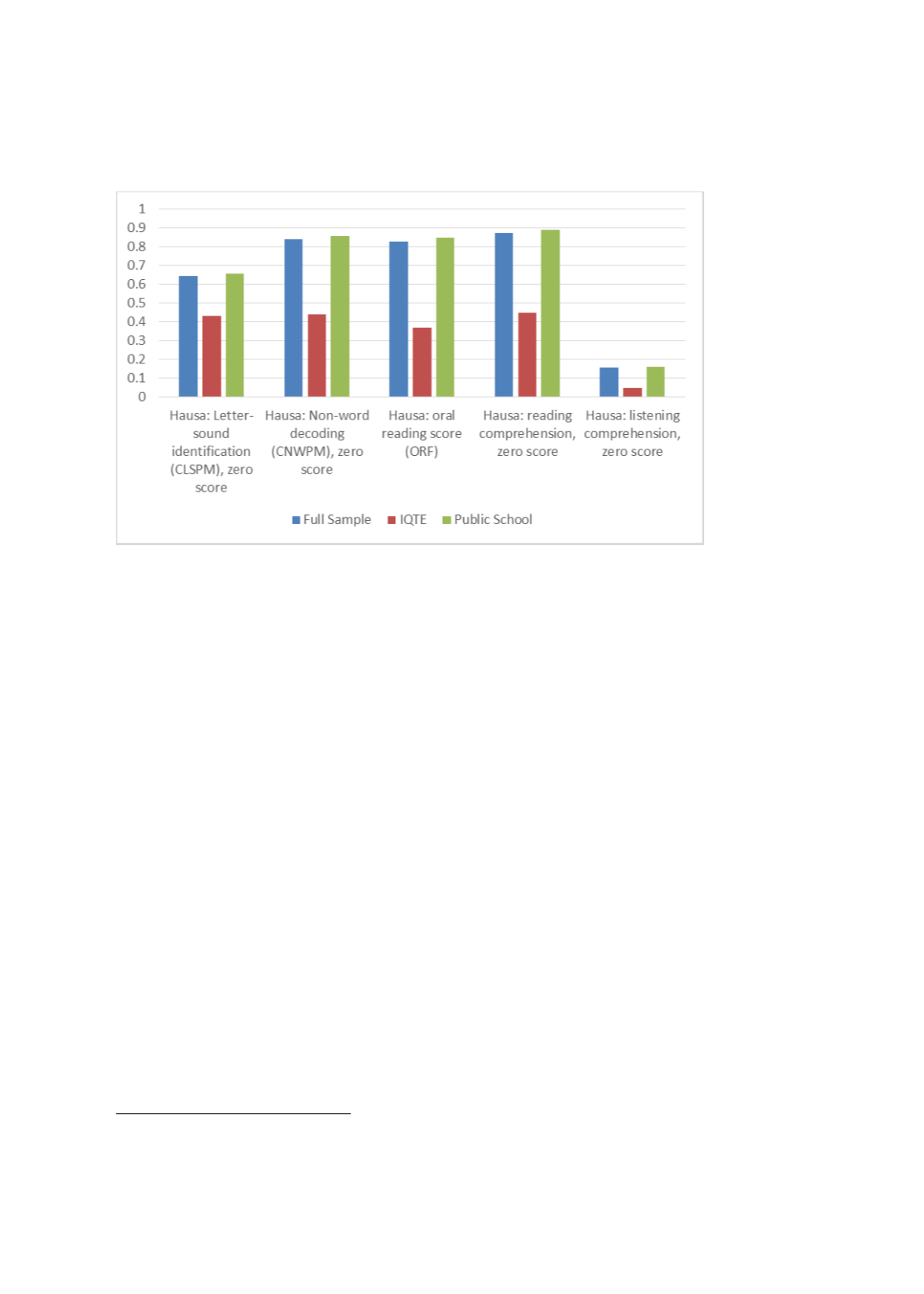

178
Figure 3.4.10: Zero Scores in 5 Hausa Sub-Tasks in EGRA 2014
Source:
Authors’ calculation based on raw (child-level) data.
Overall, student performance in EGRA suggests very low levels of reading skills among Nigerian
students except for listening abilities (
Figures 3.4.9
). Breakdown of the data by school type
reveals that the prevalence of zero scores is particularly high in case of government schools.
Among the IQTE students, around 40% students score zero in the first four subtasks. However,
relative to government school students, the prevalence of zero scores is lower among students
of IQTE (
Figure 3.4.10
). Part of the difference could arise owing to the fact that IQTE children
are much older as these schools often offer education in a non-formal setting attracting much
older children.
44
We explore this difference along with other correlates of the low level of
student achievement in Nigeria in the next section.
The major observations in data tend to support evidence in the literature in many respects
(especially in relation to limited quality inputs and outcomes) but the roles of school leadership,
particularly the effectiveness of the principal in performing responsibilities, were remarkably
highlighted by the study respondents as very instrumental to high pupils learning outcomes and
constituting an important feature of an effective school in addition. The motivated and qualified
teacher supply that remains a critical issue in the literature has also been emphasized in this in
this study suggesting an urgent need for intervention in these areas as a critical strategy in
promoting quality education. Besides, while the population size of madrasahs are very large, as
observed in the earlier discussion, they are not considered as critical part of the mainstream
formal education.
Apart from the wealth gap in learning outcomes, Nigeria also faces significant gender inequality
which also varies across states. In most northern states, pervasive low female enrolment,
retention and completion have persisted since the colonial era. In the south, relatively low male
secondary enrolment has been persistent in places like Anambra State. In early 2000, UNICEF
44
In other dimensions such as school readiness, there is not much difference. Two-fifths of government school
students, as well as IQTE pupils, reported having attended nursery school before enrolling in primary school.
















